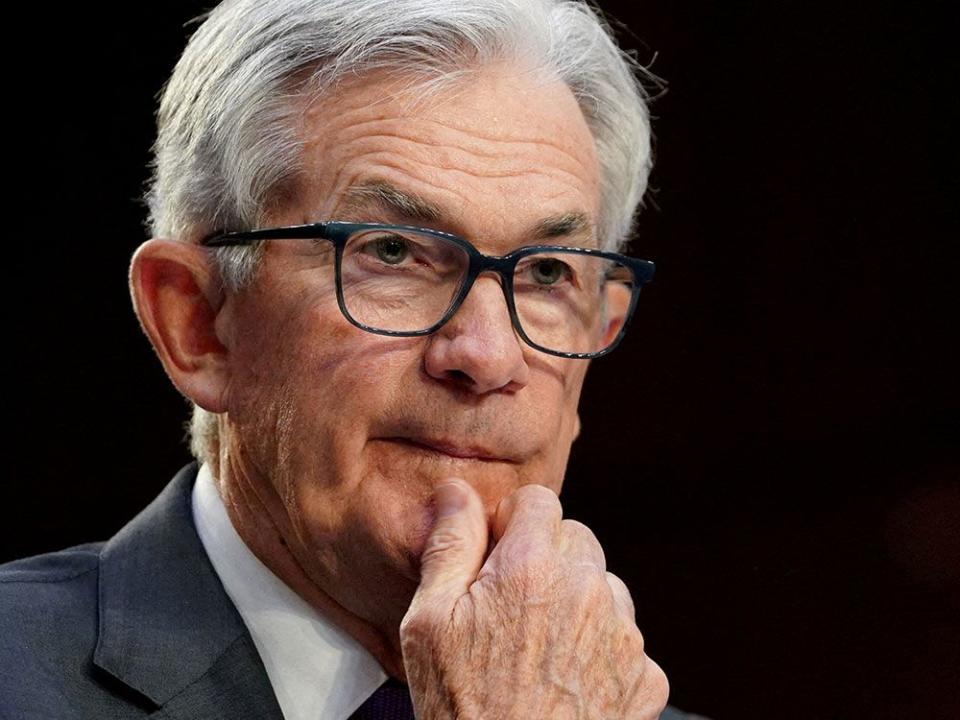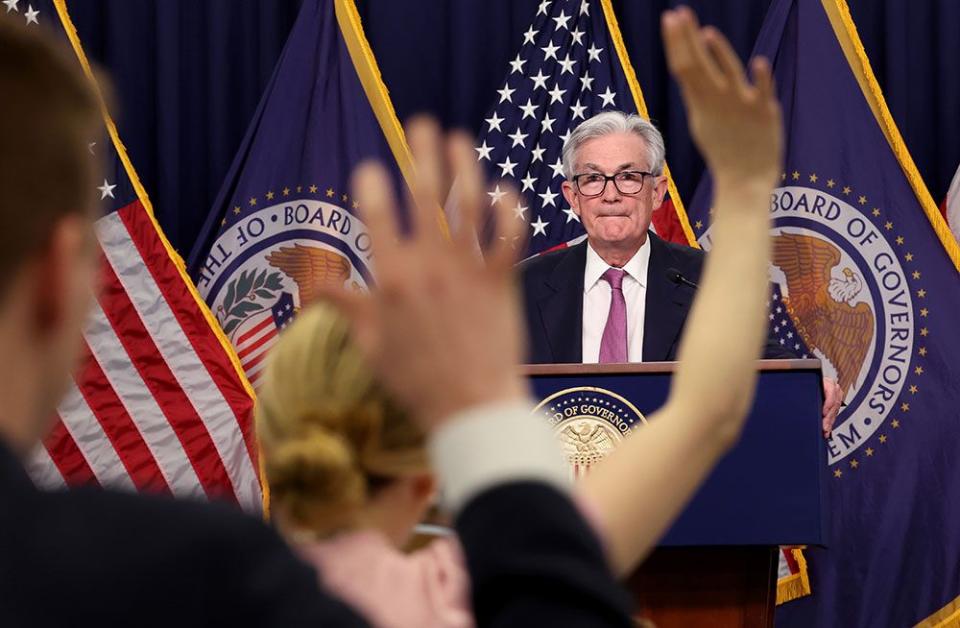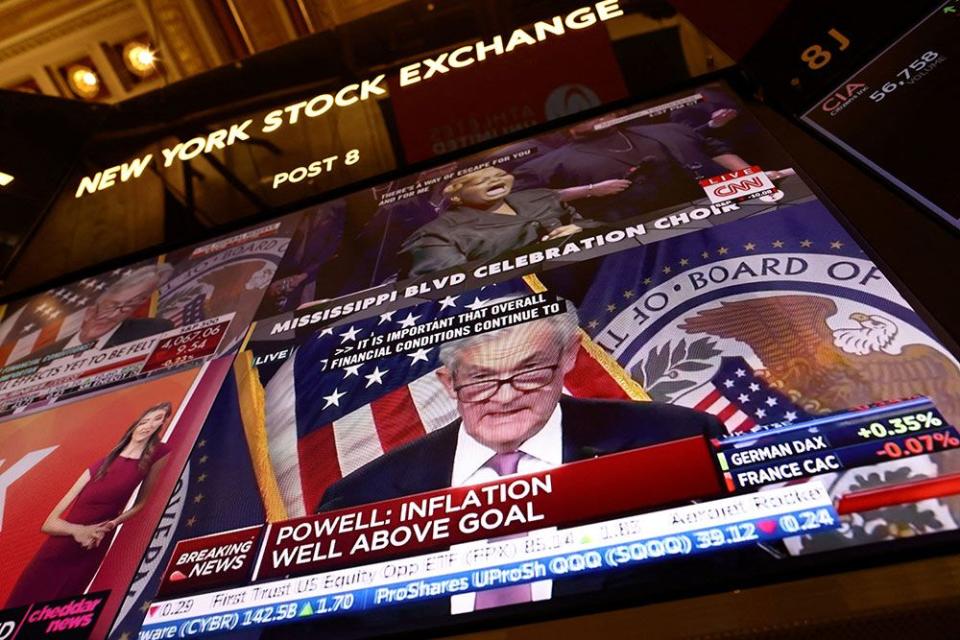Federal Reserve decision LIVE: How much would a hike cost the world?

As far as many are concerned in the financial world, there is only one story today: What will the United States Federal Reserve do, and say, at 2 p.m. today.
Since Silicon Valley Bank collapsed on March 10, sparking a global banking panic, the Fed has found itself wedged between inflation and a banking crisis.
Will it raise interest rates and risk further bank failures and financial turmoil or pause and possibly deliver a blow to the fight against rising prices? A tough decision and an even more difficult communication challenge.
The Financial Post will be providing live coverage of relevant market events leading up to the Fed’s decision this afternoon and the following press conference. Check back here often for updates, expert analysis and breaking news.
If you have questions or insights please add them to comments below.
1:50 PM
Countdown to decision: Ten minutes
1:30 PM.
BREAKING!
The Bank of Canada releases deliberations to the monetary policy decision on March 8. Read them here first
1:22 PM
Copper for hope and gold for fear
As the Fed considers raising interest rates this afternoon, investors weighing how to balance their exposure to copper and gold face one of the trickiest calls in years.
Copper has long been considered a proxy for global economic growth: Its versatility as a construction material, an electrical conductor and much more means that its demand should rise as the macroeconomic horizon brightens.
By contrast, gold is a hedge against inflation — if the economy and the U.S. dollar all tank it should hold its value and perhaps even rise.
So whether to invest in copper or gold depends on what you think is going to happen to the economy: Are we on the precipice of a banking liquidity crisis or will those concerns dissipate as inflation returns to normal levels?
Jackie Przybylowski, a metals and mining analyst at BMO Capital Markets, wrote earlier this week that mining and metal investors began March with widespread optimism.
The key words are “began the month” because troubles at Credit Suisse and other banks have pretty much ended that.
“Only a couple short weeks ago, I was thinking that we should maybe start to think about valuation [of miners] purely on Net Asset Value [basis] to put more emphasis on the longer-term cash flows and growth opportunities,” Przybylowski wrote in a March 20 note titled ‘Themes from the Road: Optimism Wiped Out (For Now)’.
Instead of looking long-term, however, she wrote that global economic fallout from the banking liquidity crisis has created immediate concerns anew about “inflation of operating and capital costs” and the likelihood that a recession could lessen demand for copper and other metals.
As a result, investor focus is shifting back to the near-term cashflows and the risks from rising interest rates.
Gold miners would also face the near-term risks that rising interest rates would raise operating costs, but have the benefit of producing a metal that hedges against inflation. Accordingly, Pzyrbylowski wrote that some investors are taking a second look at gold miners, and interest in the sector may be rising, albeit tepidly.
“What a difference a couple weeks makes,” she wrote.
Whether the Fed decides to hike interest rates, and if so by how much, will provide one new data point about how to think about the dual risks on the horizon, inflation and slowdown.
— Gabriel Friedman
12:10 PM
Keep your powder dry

The reporters and editors of the Financial Post don’t give investing advice — we let our sources and contributors do that.
But if we did, we might advise caution in the aftermath of the Fed decision. Interpretations of the Fed’s thinking can change between the time the Federal Open Market Committee releases its press release at 2 p.m. and the time chair Jerome Powell concludes his press conference an hour or so later.
“If recent history is any indication, the market response could flip between the statement release and the press conference, with reversals likely to occur throughout the question-and-answer period,” Karl Schamotta, chief market strategist Cambridge Mercantile Corp. and one of the keener observers of the world outside Bay Street, advised his clients in a note this morning.
“Mr. Powell is an incredibly gifted communicator, but misinterpretations could prove almost impossible to avoid,” Schamotta said.
Powell’s perceived communications challenge is finding a “Goldilocks” message that will convince investors and the larger public that the Fed is committed to crushing inflation, while also sensitive to what higher interest rates are doing to financial stability.
This week, traders are more concerned about the latter. Powell, who is paid to take a longer term view, might be more worried about losing his grip on inflation. Rarely has there been a Fed decision with this much tension. There will be lots of room for error.
Schamotta thinks the Fed will opt to raise interest rates, but acknowledged a hold is possible.
“Another hike could well prove to be the straw that breaks the camel’s back, piling additional stress on interest rate sensitive sectors like technology and commercial real estate,” he said. “But a pause could signal deeper unease about risks lurking deep beneath the surface of the financial system, triggering widespread panic.”
Commentators compare Powell to former Fed chair Paul Volcker. If he gets through today, Powell might have earned his place in the Fed pantheon.
— Kevin Carmichael
12 noon
Market update: The Dow dips into the red by 0.12% or about 40 points, S&P 500 pretty much flat and Nasdaq up about 20 points as traders continue to tread water. Canada’s TSX is up about 30 points.
11:12 AM

What’s the cost of a 25-point hike?
The Fed is stuck between a rock and a hard place, say Monex analysts Simon Harvey and Jay Zhao-Murray.
Since the collapse of three U.S. banks, including Silicon Valley bank, and the wider catastrophic ripple it cast across the global banking sector, a half-point increase today is looking a lot less likely. This upcoming decision has the Fed walking a thin line between stamping out high inflation and not rocking the boat further with more aggressive hikes.
The most likely choices are a 25 basis points today to bring the federal funds rate up to a range of 4.75 and five per cent – or to potentially pause altogether.
“At its core, this debate centres on the Fed’s sensitivity to price stability versus financial stability,” said Harvey and Zhao-Murray in a note. “While policymakers should be cautious given higher rates triggered the current flight of deposits and the liquidity troubles within the U.S. banking sector, we believe that similarly to the ECB, policymakers within the Fed should try to delineate their responsibilities and the tools at their disposal.”
The analysts added that if U.S. Treasury officials are successful in expanding the Federal Deposit Insurance Corporation’s deposit insurance threshold above its current cap of $250,000 without requiring congressional approval, it could give the Fed some wiggle room to hike rates further without escalating bank crisis contagion.
Just looking at the economic fundamentals, these analysts say more rate hikes should be on the table. The annualized six per cent pace of inflation recorded in February is still a far cry from the Fed’s two per cent target.
That said, these analysts aren’t blind to the effects further tightening could have.
“A tightening in financial conditions through the credit channel would naturally weigh on inflation, but it would come at the cost of a recession and the failure of the Fed to fulfil its dual mandate,” they wrote.
— Stephanie Hughes
10:36 AM
The Canadian angle
The Fed’s decision will have implications for the Bank of Canada. All things equal, a Fed that’s less keen to raise interest rates would make it easier for Bank of Canada governor Tiff Macklem to stick with his decision to keep rates where they are. But if the Fed decides to stay aggressive, the ripples could force Macklem to raise interest rates even though the inflation story is getting better in Canada.
Here’s Kevin Carmichael’s take on what the banking turmoil and new inflation numbers say about what Canadian policymakers might be thinking about today.
10:20 AM
So what is the Street saying?
This morning markets are pricing in about 84 per cent odds that the Fed will raise rates by a quarter point to a range of 4.75 to 5 per cent, the highest since 2007 on the eve of the global financial crisis.
10 AM
Here’s a quick catchup of how we got to where we are today.
In early March Fed chair Jerome Powell said the Fed would have to raise rates higher than expected. On March 10, Silicon Valley Bank went into receivership, the second largest bank to fail in U.S. history. Two days later Signature Bank was closed by regulators.
Since then UBS has bought Credit Suisse in a historic rescue engineered by Swiss authorities and the world’s major central banks banded together to boost liquidity in global markets.
This is the dilemma the Fed faces today. Should it pause to shore up financial stability or press on with rate hikes?
“It is incredibly hard to believe that two weeks ago we were debating just how hawkish Jay Powell was going to be at his semi-annual congressional testimony,” economist David Rosenberg wrote in a note this morning.
“What is really disturbing is how he could sound so hawkish and so convinced that rates were going to stay higher for longer, and not even know what was really happening in his own backyard.”
Just to give you an idea of the pressure the Fed is facing, here’s a chart on rate hiking cycles in the past.

9:30 AM ET
And we’re off …
A muted open on Wall Street as traders wait for the decision. The Dow Jones Industrial Average was up 9.59 points, or 0.03 per cent, S&P 500 slipped 0.83 points, or 0.02 per cent, while the Nasdaq Composite dropped 2.61 points, or 0.02 per cent at the opening bell.
With additional reporting by Reuters and Bloomberg

 Yahoo Finance
Yahoo Finance 